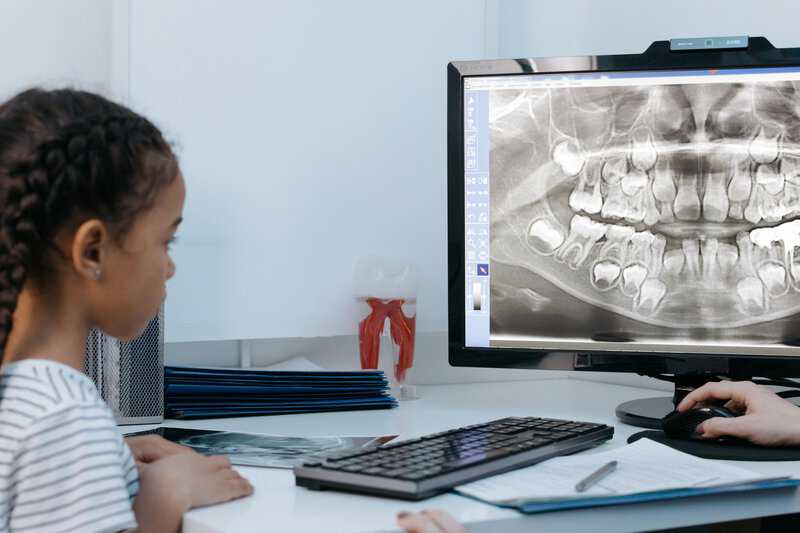As pediatric dental specialists at Great Grins Children’s Dentistry in Tucson, we’re often asked how modern technology is changing children’s dental care. The transformation has been remarkable, and we’d like to help you understand how these advances benefit your child’s oral health journey.
Understanding Digital Radiography: A Revolution in Dental Imaging
Traditional X-rays have been a cornerstone of dental diagnostics for decades, but digital radiography has revolutionized how we examine children’s teeth. The American Academy of Pediatric Dentistry reports that digital X-rays represent one of the most significant advances in dental diagnostics of the past century.
When we take digital X-rays, a small sensor captures detailed images of your child’s teeth and instantly transfers them to our computer system. This process offers several important advantages over traditional film X-rays. First, the radiation exposure is reduced by up to 90%, making the process significantly safer for young patients. Additionally, the image quality is vastly superior, allowing us to zoom in, enhance contrast, and adjust brightness to spot potential issues that might otherwise go unnoticed.
These enhanced images help us detect problems at their earliest stages, when treatment is typically simpler and less invasive. For example, we can identify the beginning stages of tooth decay before it’s visible to the naked eye, allowing us to use preventive measures rather than waiting until a cavity requires filling.
Advanced Cavity Detection Technology: Finding Problems Earlier
Modern cavity detection systems go beyond traditional visual examinations and X-rays. These sophisticated tools use fluorescence technology to identify areas of demineralization (weakening tooth enamel) before they develop into visible cavities. This early detection capability transforms how we approach dental care for children.
The system works by shining a special light on the tooth surface. Healthy tooth structure fluoresces differently than areas affected by decay, allowing us to create a detailed map of your child’s tooth health. This technology helps us:
- Identify potential cavity sites months before they become visible
- Track changes in tooth structure over time
- Make data-driven decisions about preventive treatments
- Reduce the need for invasive procedures
Laser Dentistry: A Gentle Alternative to Traditional Treatment
The integration of laser technology into pediatric dentistry represents another significant advance in patient care. Dental lasers can often treat small to moderate cavities without the need for traditional drilling or, in many cases, without anesthesia. This technology is particularly beneficial for young patients who may feel anxious about dental procedures.
Laser treatment works by using precisely focused light energy to remove decay while leaving healthy tooth structure intact. The process is remarkably precise and often more comfortable than traditional methods. Research shows that laser treatments can:
- Preserve more healthy tooth structure
- Reduce healing time after procedures
- Minimize post-treatment discomfort
- Lower anxiety levels during dental visits
Digital Treatment Planning: Precision and Predictability
Modern dental care relies heavily on sophisticated treatment planning software that allows us to provide more precise and predictable care. These digital tools help us map out everything from routine procedures to complex treatments with unprecedented accuracy.
The software creates detailed, three-dimensional models of your child’s teeth and jaw, allowing us to:
- Analyze bite patterns and development
- Plan treatments with exceptional precision
- Predict potential growth issues
- Monitor changes over time
- Share visual information with parents and specialists
This technology is particularly valuable when planning early orthodontic interventions or monitoring dental development. It helps us identify potential issues before they become problems and allows us to create more effective treatment strategies.
The Impact of Digital Record-Keeping on Patient Care
While perhaps less exciting than some of our other technology, our digital record-keeping system in our Tucson pediatric dentistry office plays a crucial role in providing excellent care. This comprehensive system maintains detailed records of every aspect of your child’s dental health, from treatment histories to developmental milestones.
Digital records allow us to:
- Track developmental patterns over time
- Identify trends that might indicate emerging problems
- Coordinate care more effectively with other healthcare providers
- Make more informed treatment decisions
- Provide more personalized preventive care recommendations
The Journal of Digital Dentistry reports that practices using integrated digital systems show significantly improved patient outcomes, particularly in preventive care and early intervention scenarios.
Looking to the Future
At Great Grins Children’s Dentistry, we believe that understanding these technological advances helps parents make more informed decisions about their children’s dental care. While technology continues to evolve, our commitment remains focused on providing the most effective, comfortable, and protective care possible for our young patients.
We encourage parents to ask questions about our technology and how it benefits their child’s specific needs. Understanding these tools and their benefits can help reduce anxiety and build confidence in the treatment process.


